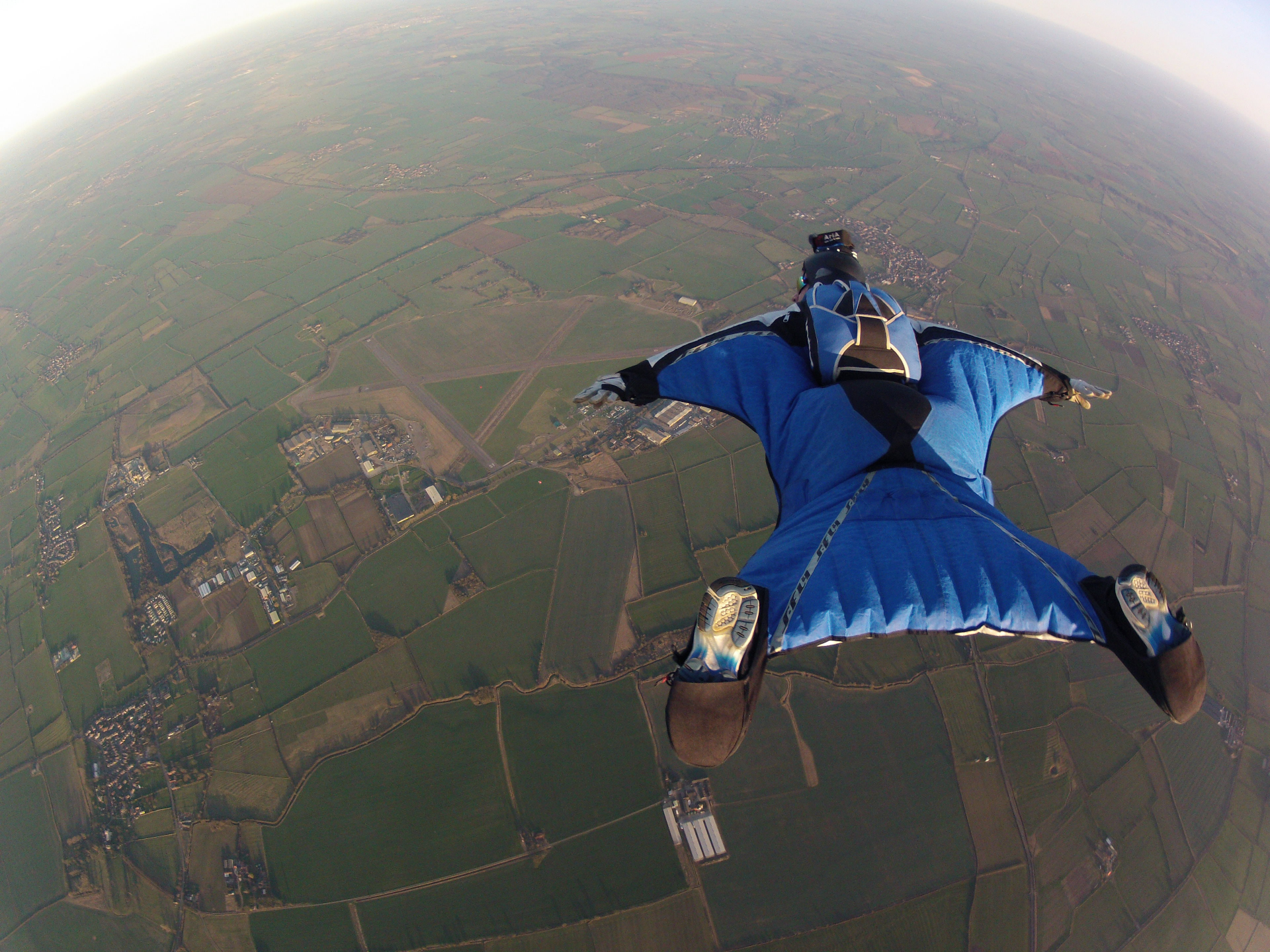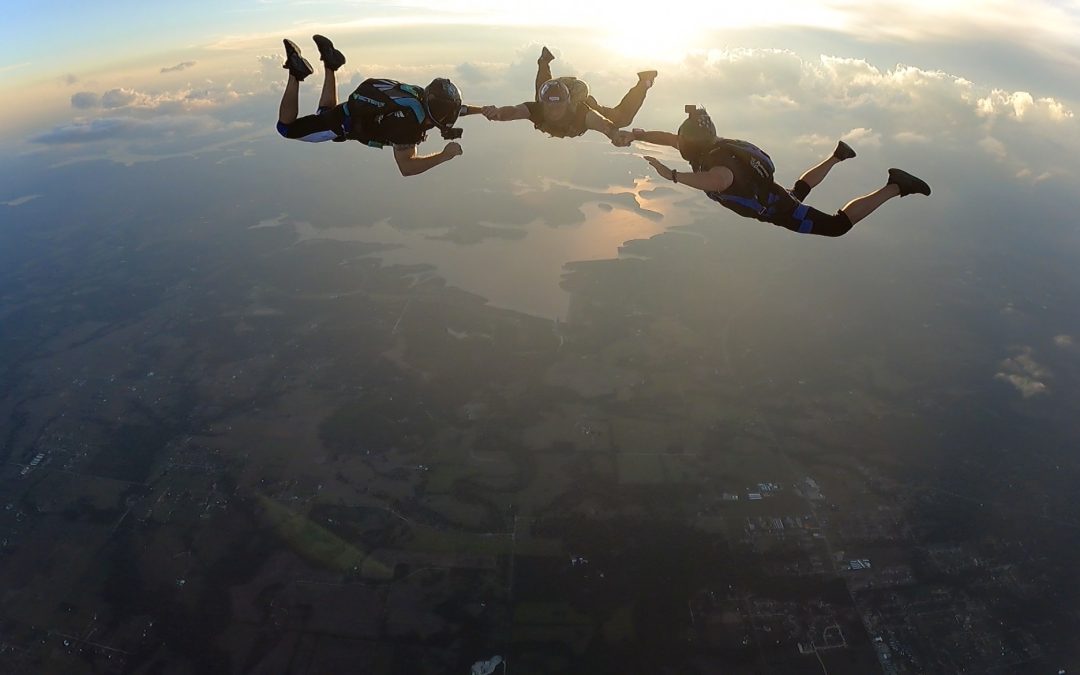By: Matt Myers | Skydive Airtight
Skydiving, BASE Jumping and Wing Suits. What are they and how can you start?
“Skydiving” loosely describes any sport that is part freefall and parachuting but what are the differences between them all and how can I get started in the sport?
“How do I start Skydiving/BASE Jumping/Wing-Suiting?” This is a question that we get asked all the time.
—————-

With the last decade seeing an increase in availability of “low-cost”, low profile action cameras, as well as platforms by which we can share their videos, the many facets of skydiving and parasports have grown in recognition and popularity.
With the last decade seeing an increase in availability of “low-cost”, low profile action cameras, as well as platforms by which jumpers can share videos, the many facets of skydiving and parasports have grown in recognition and popularity.
Among each discipline of skydiving and parasports, you will see different types of equipment and training/experience.
-
Sport Skydiving
- The most traditional of the sport. While typically performed from altitudes of 10,00-14,000 ft, some specialized aircraft are equipped to take jumpers to 18,000ft+. If you’re looking to begin your journey as a skydiver, sport jumping is the starting point.
-
Tandem Skydiving
- Tandem Skydiving utilizes a specially designed harness allowing 2 jumpers to land under the same canopy. Whether you’re a “one and done” or planning to pursue a career in the sport, Tandem skydiving is the BEST option for first-time jumpers to experience the thrill of free fall and canopy flight.
-
BASE Jumping
- An acronym for “Building, Antenna, Span, Earth”, B.A.S.E. Jumping involves jumping from solid stationary objects or points into free air before deploying your parachute. Because freefall distance is limited (typically less than 1,000 ft,) your canopy deployment occurs at sub-terminal velocity. BASE jumping requires a specially designed canopy, container and packing procedures for rapid deployment at sub terminal speeds.
-
Wing-suiting
- Becoming more of a household term, these “squirrel suits” allow jumpers to exit the aircraft and track long distances (sometimes 8-10 miles) before opening their canopy. The most “popular” wingsuit discipline being “Proximity wing-suit jumping” where wingsuiters initiate the jump similar to a BASE jump from a cliff; tracking through a gulley or canyon valley in close proximity to trees, the ground, or cliffs.
-
HALO and HAHO
- HALO and HAHO are acronyms for “High Altitude, Low Open” and High Altitude, High Open” Each being precisely as it sounds. While the types of skydives gained got their roots from the military sector, they are each available to civilian skydivers.
- Within civilian skydiving, “High Altitude” typically refers to exit altitudes above 20,000ft MSL. This form of skydiving requires specialized equipment and training as pilots and jumpers must have supplemental oxygen on the aircraft above 15,000ft and jumpers must also have oxygen during freefall. Additionally, temperatures are approximately 70°F colder than ground temperatures. While a HALO jump emphasizes the extended free fall time, a HAHO jump focuses on canopy flight.
- In the US, most civilian High Altitude jumps take place from 20,000 – 28,000ft, there are some aircraft which will take jumpers above 30,000 and a very small number (only 1 currently in the US) which will take jumpers as high as 41,000ft (for a VERY pretty penny).

-
Speed Flying
- A hybrid between BASE jumping and paragliding, jumpers will launch from a cliff, bluff, or steep mountain with an inflated canopy, then navigate to the bottom. Unlike paragliding, the canopies used for Speed Flying are closer in size to a traditional sport canopy allowing the jumper to move much quicker.
-
Indoor Skydiving
- Indoor Skydiving employs the use of a vertical wind tunnel to “simulate” freefall in a controlled environment and provide opportunity to have close and direct feedback from instructors without the need for aircraft, a rig, or long waits between jumps.
Other Parasports
-
-
Paragliding
- Similar to speed flying, paragliders use much larger canopies to launch from a high elevation into the wind and glide over long distances
-
Paramotoring
- Similar to paragliding, however the equipment used involves a large propeller attached to the back of the individual allowing for sustained flight
-
Speed Riding
- This is a relatively new dscipline in the realm of parasports. It is the marriage of downhill skiing and paragliding where skiers will don a small canopy (typically less than 80sqft) with a very high glide ratio and begin skiing down extremely steep mountains. The parachute enables the speed-rider to launch from cliffs, bluffs or drop-offs and continue their ride down the mountain over sections otherwise too steep for sustained downhill skiing.
-
The United States Parachute Association currently has about 41,000 active members of which about 32,000 are US residents. To put that into perspective, currently the US population is approximately 333 Billion making skydivers 0.00961% of the US population. For reference, there are approximately 37,000 professional athletes across all competitive sports in the US.
CONNECT WITH US
stay up to date with all things #skydiveairtight

